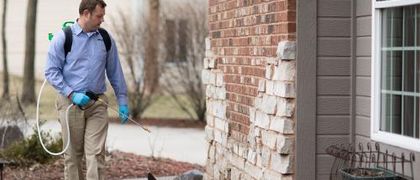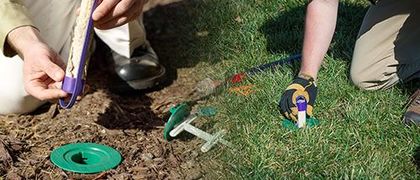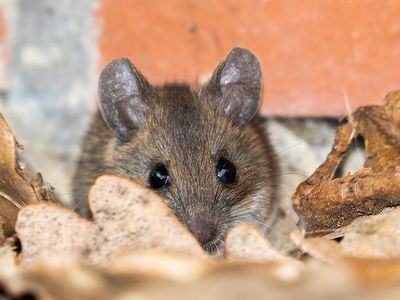If you’re worried about mice in your walls, in your attic, or elsewhere in your home, you’ve probably already noticed signs of mouse activity and despite setting a few traps, you can’t seem to squelch the rodent rebellion. If this sounds familiar, rest assured, you’re not alone. In Omaha, Kansas City, and Des Moines as well as throughout the Midwest, mice are a common pest problem, no matter the season and make their way inside through a variety of entry points. In this article, we’ll identify common entry points mice use to infiltrate homes, and offer practical suggestions to stop the influx of rodents.

Do homeowners really need to worry about mice in the walls or elsewhere in the home?
Absolutely they do! Homeowners should be concerned about mice in the walls, attic, crawl space, basement, kitchen – anywhere in the house – for several reasons, including, but not limited to:
- Minor to major damage
Mice gnaw on insulation, wiring, and other building materials which can lead to serious damage including structural issues. - Fire hazards
When mice chew on electrical wiring, there’s a very good chance they will create a fire hazard. In fact, fire experts estimate 20% of undetermined house and structure fires in the U.S. every year are caused by mice and other rodents. - Health risks
Not only are mice destructive pests, but they also carry and spread diseases and parasites that pose health risks to humans. What’s more, they contaminate food, surfaces, and even the air we breathe with their droppings, urine, saliva, and fur.
Common entry points for mice
- Gaps, holes & other exterior openings
Mice are skilled at exploiting even the tiniest openings in a home's exterior. Cracks in the foundation, gaps around windows and doors, and holes in the siding provide easy access for these small rodents. - Ventilation openings
Mice often sneak inside through attic and crawl space vents. While essential for maintaining proper air circulation, they are vulnerable to mice if not adequately protected. - Crawl spaces
And speaking of crawl spaces, this is another hot spot for mice. Once they access the dark and damp environment through tunnels in the dirt floor or other vulnerable points, they have direct pathways to rest of the house, allowing them to scurry through walls and other concealed areas undetected. - Chimneys and rooflines
Uncapped chimneys provide a direct route indoors for mice, while damaged or missing roof shingles or holes along the roofline can create openings for these rodents.
How to keep mice out of your Midwest home
To keep mice out of your home and away from your family, you’ll want to focus on rodent-proofing the house. Not sure how to do that? That’s okay, our local pest control specialists are here to share a few of our favorite rodent prevention tips.
- Seal all potential entry points on the exterior of your home
- Repair cracks in the foundation
- Install weather stripping around doors and windows
- Install mesh screens or durable material over vents to stop mice but not the air flow
- Seal off and address moisture problems in your crawl space
- Replace roof shingles
- Repair holes along the roofline
- Install a chimney cap
What to do if you hear mice in the walls or have found other signs of a rodent problem
If you’re hearing mice in the walls, have spotted droppings in your pantry, or have identified other signs of a mouse problem in your home, contact Miller Pest & Termite today!
Our locally owned and family-operated pest control company has been protecting Midwest homes and families from pests since 2009 and are proud to offer effective rodent control services that stop mice and rats from taking over. In addition to our stand alone rodent solution, we also specialize in home pest control services that offer protection against mice, rats, and other house-infesting pests all year long! Check out our residential plans and pricing below or reach out via phone or form to request a free quote!


Get Help Now!

















